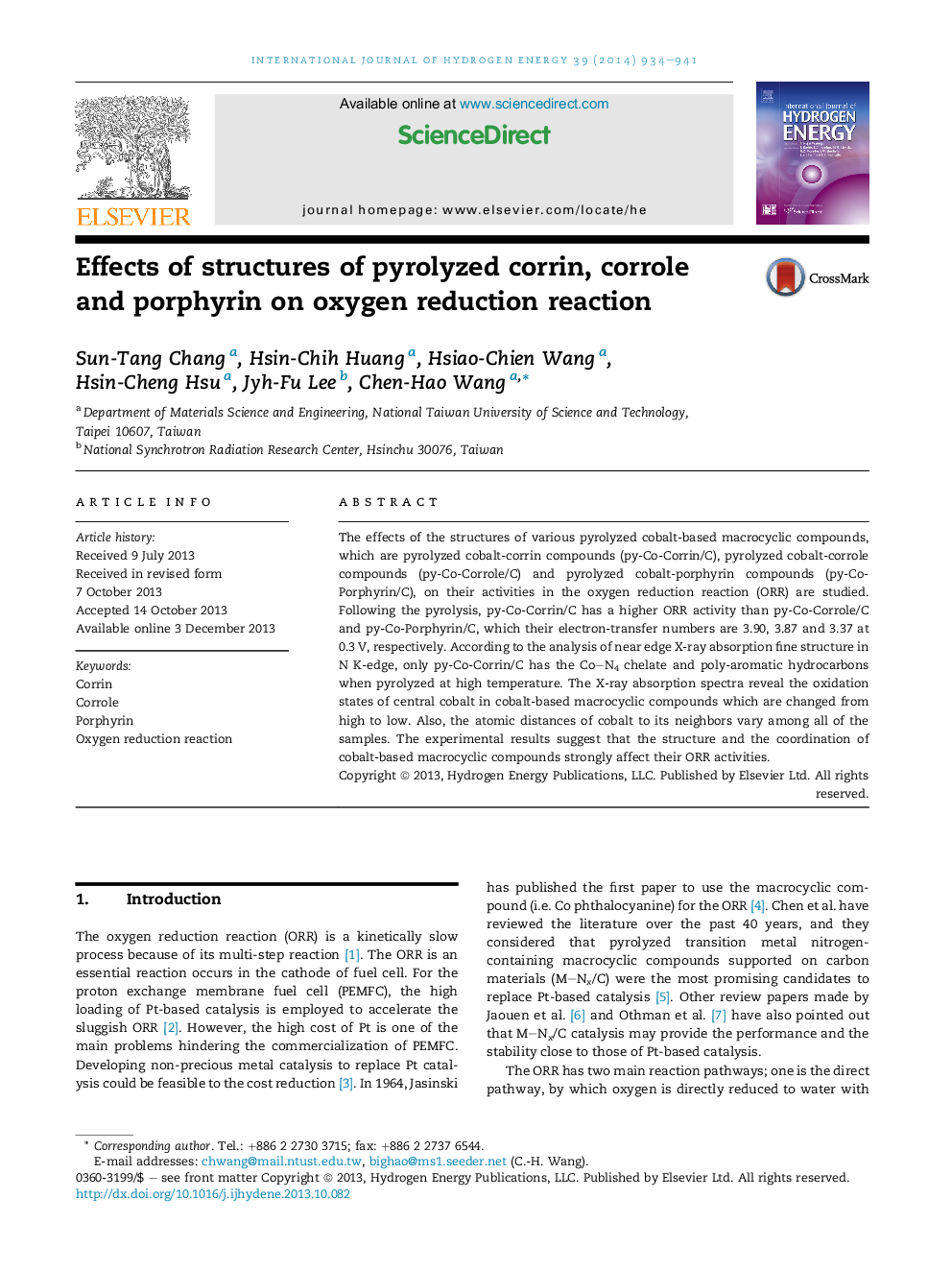| Article ID | Journal | Published Year | Pages | File Type |
|---|---|---|---|---|
| 1276540 | International Journal of Hydrogen Energy | 2014 | 8 Pages |
•The structures of macrocyclic compounds affect their ORR activities.•Co–N4 chelate is responsible for the O2 adsorption.•Graphene-like structure is helpful for the electron-transfer.
The effects of the structures of various pyrolyzed cobalt-based macrocyclic compounds, which are pyrolyzed cobalt-corrin compounds (py-Co-Corrin/C), pyrolyzed cobalt-corrole compounds (py-Co-Corrole/C) and pyrolyzed cobalt-porphyrin compounds (py-Co-Porphyrin/C), on their activities in the oxygen reduction reaction (ORR) are studied. Following the pyrolysis, py-Co-Corrin/C has a higher ORR activity than py-Co-Corrole/C and py-Co-Porphyrin/C, which their electron-transfer numbers are 3.90, 3.87 and 3.37 at 0.3 V, respectively. According to the analysis of near edge X-ray absorption fine structure in N K-edge, only py-Co-Corrin/C has the Co–N4 chelate and poly-aromatic hydrocarbons when pyrolyzed at high temperature. The X-ray absorption spectra reveal the oxidation states of central cobalt in cobalt-based macrocyclic compounds which are changed from high to low. Also, the atomic distances of cobalt to its neighbors vary among all of the samples. The experimental results suggest that the structure and the coordination of cobalt-based macrocyclic compounds strongly affect their ORR activities.
